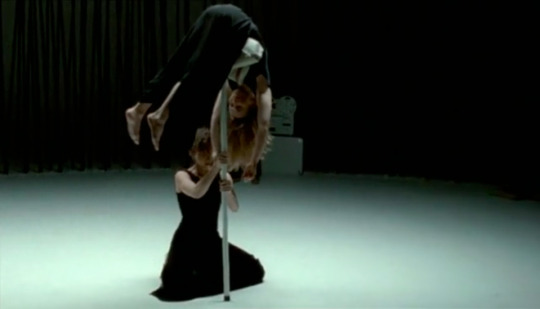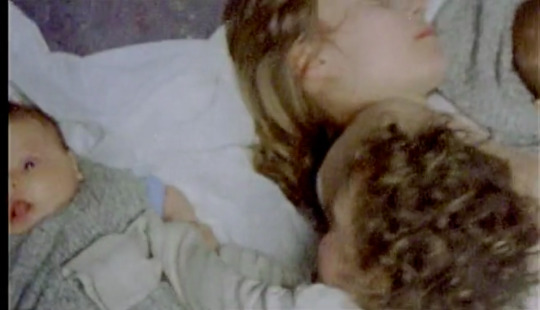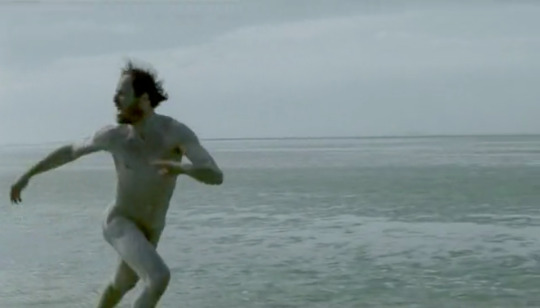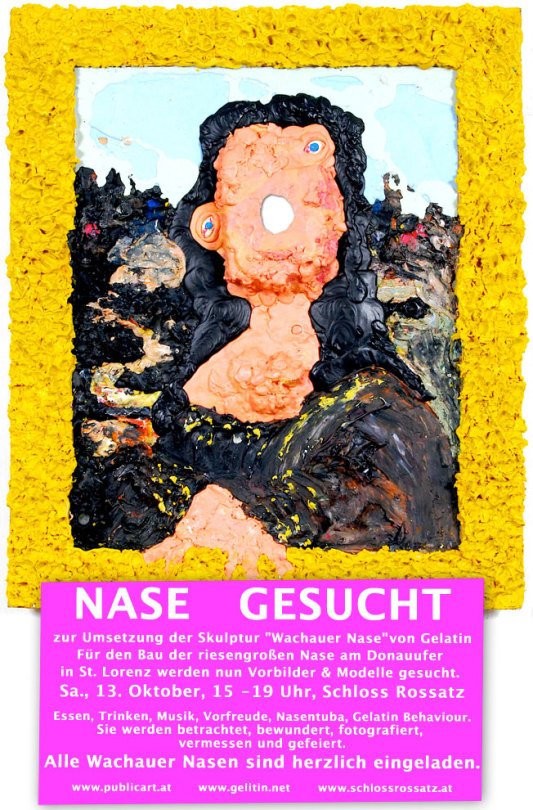Video
youtube
Eddie Peake's performance piece for the Tate Tanks inaugural program.
Amidst the Sea of Flailing High Heels and Kitchen Utensils, part 1
July 21, 2012
Idealized, sexualized bodies. Bodies of latent desire. Desiring bodies. Bodies as objects of eternal admiration. Sculpted, framed, used, and frustrated by the constraints imposed on them through socio-political struggles. Bodies filtering through a space, making epic statements with their physical force and daring action. A blatant orgy in the Tate? It is testing of our discomfort levels...
1 note
·
View note
Video
vimeo
All that glitters is not gold.
Kenya Robinson (born 1977) is an a community-taught artist and describes herself as an "aficionado of all things blonde"
The text for this performance comes from CHOCOLATE MOODS, a collection of erotica in the Urban Fiction tradition. Hawked on the streets of every American metropolitan city, these pulp narratives range from self-published tales of “ghetto life” to slickly packaged morsels from major publishers. Black Urban Fiction has a distinctive language that I hope to break out of its context by including excerpts filtered through the auto-read function of Adobe Acrobat. By presenting these freestanding phrases in automated voices and combined with stop-motion animation, I believe layers of meaning are revealed that connect to almost poetic, sometimes obscene, often ridiculous modes of interpretation.
It has a mesmerising dynamic, the words and images seep into the unconscious. They drive sultry memories and fantasies forth. The dance itself is so engrossing that I found hard to tear myself away. Once it was over, however, there was this strange feeling of emptiness, unsatisfied dreams, a daydream just ended. It made me think of that old expression "all that glitters is not gold."
It is a well-known saying, meaning that not everything that looks precious or true turns out to be so. This can apply to persons, places, or things that promise to be more than they really are. The expression, in various forms, originated in or before the 12th century and may date back to Aesop.
Chaucer gave two early versions in English: "But all thing which that schyneth as the gold / Ne is no gold, as I have herd it told," and "Hyt is not al golde that glareth."
The popular form of the expression is a derivative of a line in William Shakespeare's play The Merchant of Venice, which employs the word "glisters," a 17th-century synonym for "glitters." The line comes from a secondary plot of the play, the puzzle of Portia's boxes (Act II - Scene VII - Prince of Morocco):
All that glisters is not gold;
Often have you heard that told:
Many a man his life hath sold
But my outside to behold:
Gilded tombs do worms enfold.
Had you been as wise as bold,
Young in limbs, in judgement old
Your answer had not been inscroll'd
Fare you well, your suit is cold.
Panning for gold often results in finding pyrite, nicknamed fool's gold, which reflects substantially more light than authentic gold does. Gold in its raw form appears dull and does not glitter.
2 notes
·
View notes
Text
In 1920, El Lissitsky wrote...
"The private property aspect of creativity must be destroyed; all are creators and there is no reason of any sort for this division into artists and nonartists" And what now of art, production and participation, law and intellectual property, survival of the few and the labor of many?
0 notes
Text
INTERVIEW // Anna Teresa De Keesmaekeer
Interview originally published at a Garage Magazine Exclusive.
GARAGE EXCLUSIVE
GARAGE catches up with the Belgian choreographer Anne Teresa de Keesmaekeer as her pieces “En Atendant” and “Cesena” premiere in London at Sadler’s Wells. Originally created in 1982, her first piece of choreography “Fase,” four movements to the music of Steve Reich marked the inauguration of The Tate Tanks. Its adaptation for Tate’s groundbreaking new performance space also signifies the timely arrival of dance in the museum.
Anne Teresa’s work has been revolutionary in its breaking down of dancer roles as those based on gender difference, and her synthesized treatment of the relationship between dance and music- namely through the analysis of the music score. Through her work as a choreographer and out of frustration working with dancers who were trained to do nothing more than to perform a pre-set sequencing, Anne Teresa founded P.A.R.T.S. in 1995 in Brussels. Performing Arts Research and Training Studios engage members of the world’s most renowned companies: Merce Cunningham, Trisha Brown, William Forsythe, Pina Bausch, and Rosas; and train student to produce work with a critical and reflective attitude. Some of the P.A.R.T.S. graduates such as Noé Soulier and Mette Ingvartsen are already taking the dance world by storm.
Wrapped up in an understated and beautiful cashmere grey shawl, Anne Teresa speaks to us about her brief encounter with the White Cube, her collaborations, and thoughts for future projects.
GARAGE Magazine: We have recently had the opportunity and pleasure to see your work at the Tate and to attend the performance of En Atendant for the second time, in a different setting than when it was presented at Festival d’Avignon a few summers ago. The experience of your work is quite distinct in each instance. So I was wondering if that is something you think about, specifically what it is like to adopt choreography to museum spaces because I know you’ve worked now not only with Tate Modern but also with MoMA in New York. What is your experience of those works?
Anne Teresa De Keesmaekeer: Well, first of all, the Avignon situation was a very specific situation because it was an open air situation and it was done in the dusk. The pieces [En Atendant and Cesena] were commissioned by the Festival and I wanted to work with Ann Veronica Janssens and Michel Francois with natural light, with those architectural spaces and their history [En Atendant was originally presented at the Celestine cloister and Cesena at the Palace of the Popes in Avignon]. The pieces were first created in the rehearsal studio so it was clear from the beginning that we would make the transformation from the natural daylight to a theatre space so Veronica and Michel found very simple solutions to make those differences translate.
The experience with Tate and MoMA are of a different order. I mean it’s really some kind of, you know dance, theatre, music, the visual arts, are sometimes existing as these gated communities even if there is some history of art performance that is linked to the history of modern art, especially in the 60s. It was really about discovering new spaces and new publics when we were performing at Tate. The difference between Tate and MoMA, you had to break out of the totality, people were all around, and it was trying because at Tate it was 15 minutes [performances] and then one hour later 15 minutes, so people would go around and come back, people would not be seated. They moved around the architecture. So it is a totally different experience, also social-wise.
GM: Yes, of course, it is a completely different experience for the audience. And the sociability that comes from the experience may or may not become apparent. What about the choreography itself, does it change or not between spaces?
ATDK: It doesn’t, no.
GM: So have you ever developed work for a particular gallery space in mind?
ATDK: Well, at the very beginning, the very first piece I made [Asch, 2000] before Fase. And then some pieces with Ann Veronica.
GM: Can you tell us more about those pieces?
ATDK: There was a piece I made with Ann Veronica working with light and sculpture, working very much with alternating light and darkness to see how they can be used to sculpt space visually. There was also an early piece on which we worked together that used fog, which has been for years a material Ann Veronica worked with a lot. So it is changing this work on perception, and it is this interest of working with light with Ann Veronica, keeping the light very bare and simple.
GM: Yes, it is very powerful in that way because it allows the space to model and occupy itself, and also with the dancers and the acoustics become a composite experience. It is stunning because it focuses perception on the area…
ATDK: Well, it is a shared space both visually and with the audience. But of course there is also set by a simple outline, the line of chalk.
GM: What about your experience at MoMA where it was you performing your own choreography?
ATDK: Yes, it was very much engaged with the architecture of the atrium. It was a solo work with sand. The architecture of the atrium is such that people can look from above. It was very nice and exceptional because you do not often have so many spaces where this is possible. And, of course, this huge white atrium that is like a square in which the circle, a mandala, can emerge from the sand. And is the silence, museum are usually silent. In the modern day, going through a museum is such an unusual experience.
GM: What about your experience working with the museums? As I understand the dance programme was a part of the exhibition organized by the Drawings Department.
ATDK: Yes, it was an exhibition on…
GM: …the line.
ATDK: Yes, that’s right.
GM: So is it something that you think about – the way that museums try to fit in dance within their context?
ATDK: Yes, there is a renewed interest in dance in the last few years. A whole number of artists– of course Tino Sehgal and Jérôme [Bel]…
GM: …Xavier le Roy.
ATDK: And people from the visual arts.
GM: What about your interests? Do you have an interest in continuing to work with the museums?
ATDK: Well, I am interested. My main interest in the visual arts was the collaboration with Ann Veronica, which has been since 5 years that we have been working together and, also, Michel François. And I like that minimalism. She is quite elegant, which I really appreciate and is very inspiring for me and has taken me places where I wouldn’t have gone.
GM: And perhaps, one last question. You have been working as a dancer and choreographer for quite a long time. Are there any young dancers or choreographers whose work you find inspiring?
ATDK: The people who I follow most closely are the ones at P.A.R.T.S. school and the people from the last generations have been doing really interesting work. I prefer not to name works, but in the last two or three generations there has been radical, stubborn, intelligent work that comes out.
GM: Do you still find any time to teach at P.A.R.T.S. yourself?
ATDK: Well I try, but it is very difficult with my schedule.
GM: Do you enjoy it?
ATDK: Yes. Well the last year I have worked closely with Bojana Cvejic in putting together a book and in the next year I will try to teach from it.
2 notes
·
View notes
Video
New Sigur Ros track, intense choreography by Sidi Larbi Cherkaoui.
11 notes
·
View notes
Photo






Beautiful. Stunning. Breathtaking film by Wim Vandekeybus: Here After.
All film still.
Here After is a cinematic adaptation of Purr choreography, also by Vandekeybus.
10 notes
·
View notes
Video
vimeo
Video of the morning:
Meredith Monk talks about the beginnings of Judson Dance, the influence of John Cage and how dance was made a part of life in the 1960's.
Oh yeah, and it is Judson Dance Theatre's 50th Anniversary, in case you didn't know.
3 notes
·
View notes
Video
Brilliant use of stripes, dance, and wit! Go FIAC advertising!
0 notes
Video
youtube
Boris Charmatz speaks about his work Flipbook, which was recently presented at Tate Tanks. Flipbook examines the relationship of history, image and living dance practice. It is a tribute to Merce Cunningham as much as an attempt to critically re-imagine his teaching through practice, memory and experimental assemblage of dance captures. The choreography is composed by following the images from a book devoted to Merce Cunningham. It attempts to embody and transpose static and documentary mode of teaching and telling dance history (via the photo-document). A fascinating, beautiful and bold work.
2 notes
·
View notes
Video
Here is something to marinate: Auto Italia South East is a an incredible project based in London. Auto Italia commission projects often manifest live involving groups of artists, audiences, large productions, theatre, props, realities, languages, bodies...Their Live series are raw, charged with dynamism of a feverish generation. They are intense, intelligent, clever and candid. Cosmosis is a palimpsest of cultural movement, flux, self-errasure, it is reality and fiction. It is supra-real.
2 notes
·
View notes
Photo

If in Vienna this Saturday, don't miss a Gelitin outing to the woods...
4 notes
·
View notes
Video
Yvonne Rainer. Trio A. 1967. Initially performed as part of The Mind is a Muscle evening-long performance at The Judson Memorial Church in 1968. It was recently restaged at Tate Tanks in London during Performance Year Zero: A Living History Conference.
This is an iconic dance performance that has revolutionized our understanding of the possibilities of dance, the transformation of an idea and image in a live setting, and has broken down the existing rules guiding choreography. The sequence contains no repeated movements and tests the capacity of the body to store visual and assimilate physical knowledge thereby serving as an archive.
7 notes
·
View notes
Video
vimeo
This performance took place at The Philip Johnson Estate, also known as The Glass House in 1967. The video is silent, but the soundtrack included music of John Cage and picked up the ambiance of the event - clinking glasses, neighbour complaints, and even the sound of the police at the end coming to break up the party.
Although the video of the dance is very fragmented, it is possible to decipher the acute specificity of Cunningham style. There is also a remarkable video of Cunningham speaking about technique, teaching classes, and working within the limits of the human body: Episode 1 - Cunningham on Technique
The 1967 performance, which became know as the Country Performance ended with the dancers getting into a car and driving off. Whether this was premeditated or not would be curious to find out.
The Velvet Underground took over the dance floor after. The dance moves people are putting on are phenomenal, it is nothing I have seen before, pay close attention.
0 notes
Video
vimeo
Luiz Roque. Filme Dourado | The Golden Film. 2010.
Super 8 film transferred to video.
Luiz Roque is an artist based in São Paolo, Brazil. His early films possess an ethereal quality. Laced with romantic longing, Roque's works are equally sensual and distant, perplexing, unreal, enigmatic. Even when a human presence is known, available, it is never accessible to the viewer. You lust after this otherworldly presence. You linger just a moment longer in a beautiful trance. Perhaps it is the soft grains of Super 8, the slowness that brings memories of early silents back. The elements - light, wind, water - all coalesce into a scintillating daydream.
The Golden Film participated in the last VIDEOBRASIL São Paolo, 2011. Stay tuned for LYCRA's conversation with the artist.
“Revelado artesanalmente em processo que confere coloração dourada ao positivo Super‐8, o filme acompanha a trajetória de uma mão que parece tomar contato com determinados elementos pela primeira vez. Um flerte com a cinematografia de ficção científica”. (17. VIDEOBRASIL, São Paulo 2o11)
[ "Developed using an artisanal process that lends the Super-8 positive film a golden hue, the film follows a hand as it appears to make contact with certain elements for the first time. A flirt with science fiction cinematography" ]. (17. VIDEOBRASIL, São Paulo 2o11)
More information on Luiz Roque can be found on the artist's website.
0 notes